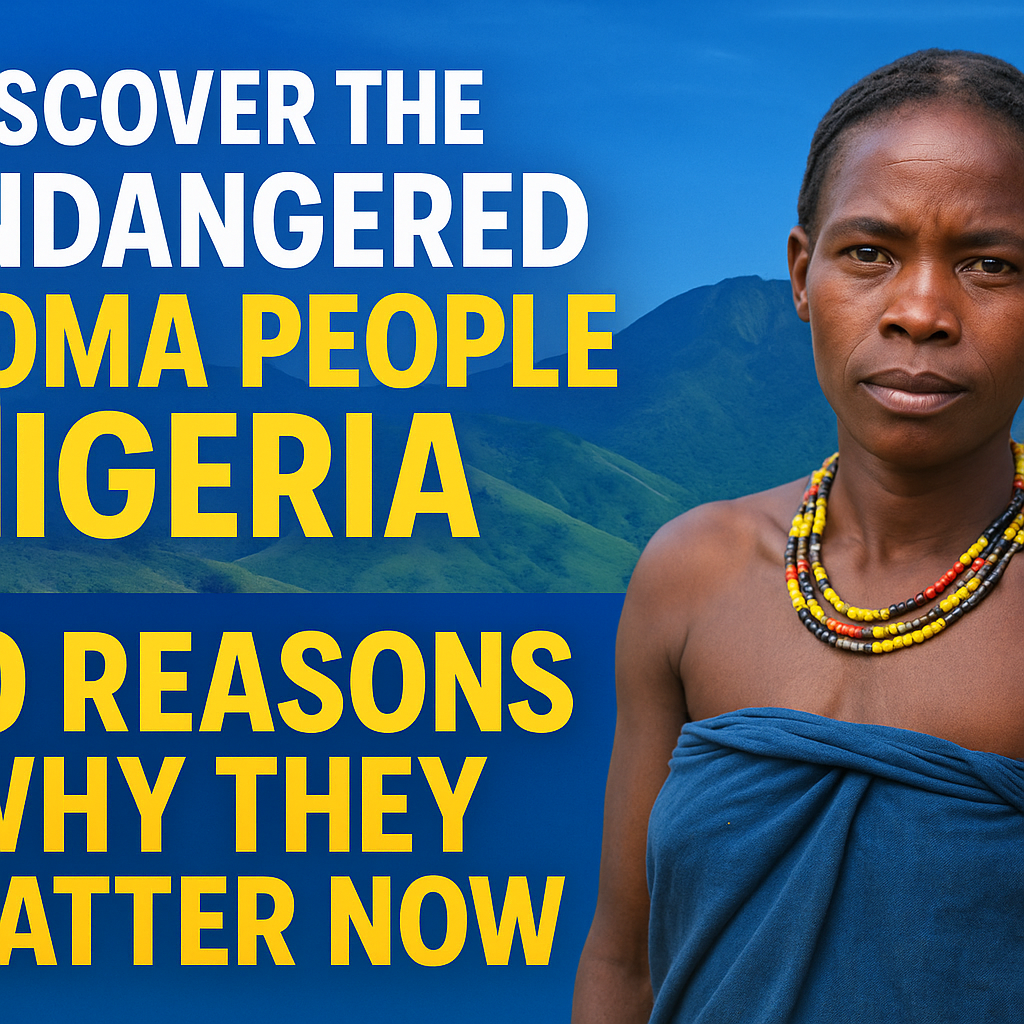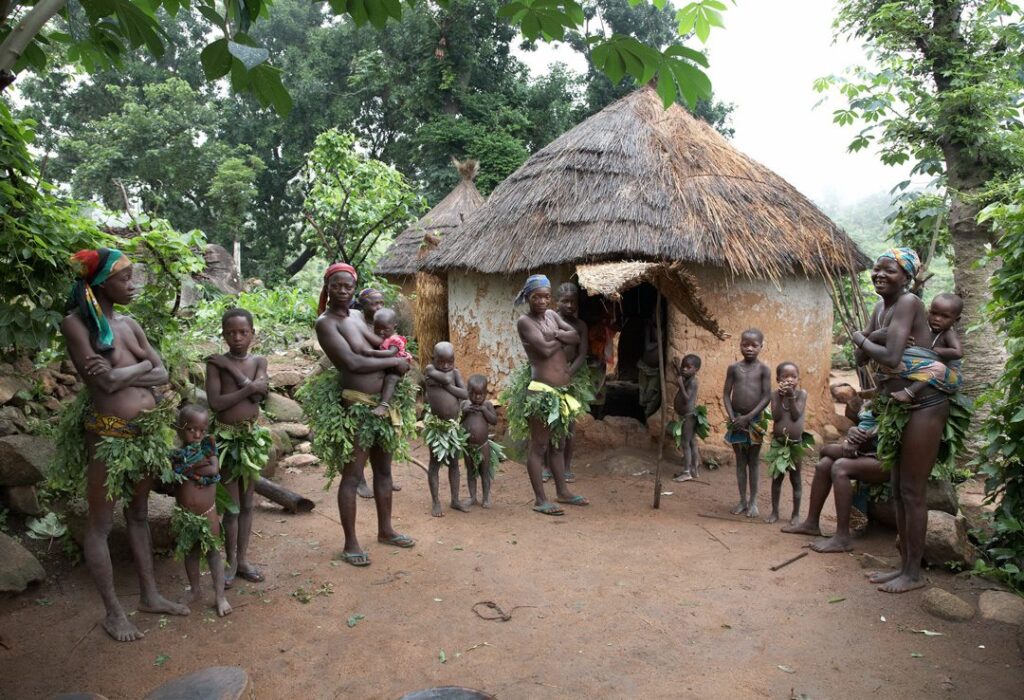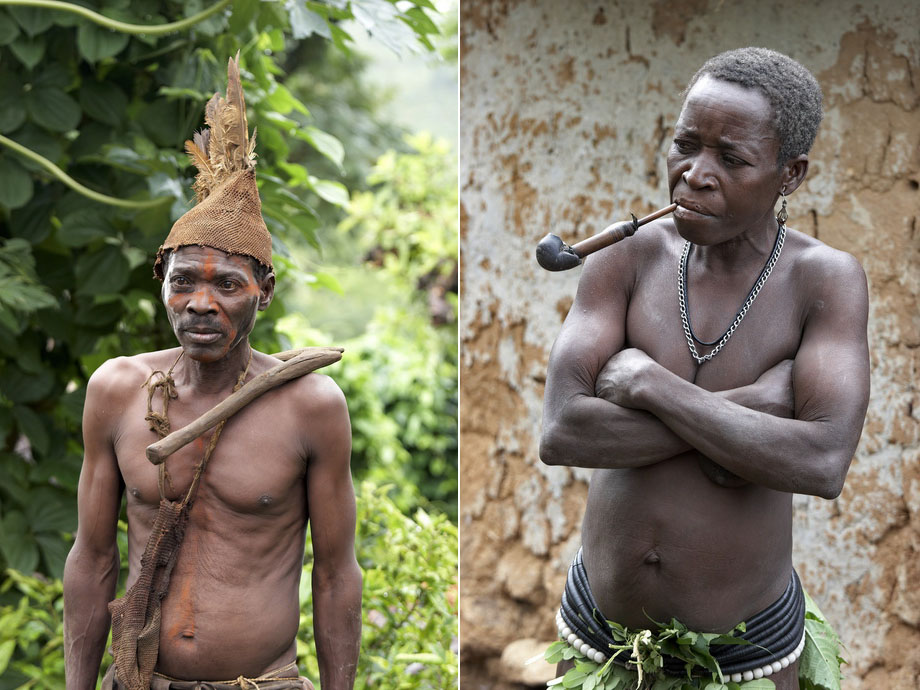Discover the Endangered Koma people Nigeria: 10 Powerful Reasons This Vanishing Tribe Matters Now
A dawn in the Atlantika Mountains: meeting the Koma
At first light, the Atlantika ridges glow a soft bronze, and footpaths stitch the hillsides like careful seams. Here, the Koma people Nigeria live between steep slopes and open plains, balancing tradition with the pull of change. This is not a museum culture; it’s a living community with fields to tend, children to teach, and stories to keep. You’re about to meet them in a way that’s conversational, factual, and respectful—because attention without care can do harm. Their homeland sits in and around the Atlantika Mountains along Nigeria’s Adamawa State near the Cameroon border, a geography that has long shaped their history and daily life.
Where the hills hold stories: geography and settlement
The Koma are most closely associated with Adamawa State’s southeastern highlands, especially the rugged Atlantika massif. Villages are spread across hill and plain, with communities linked by kinship, trade, and seasonal farm work. This mountainous setting—remote, terraced, and forest-edged—has both protected and isolated them, influencing how fast outside customs have arrived.

From isolation to awareness: 1986 and the wider world
While Koma communities interacted with neighboring peoples for generations, the wider Nigerian public largely learned about them in the mid-1980s. Accounts often point to 1986 as the year state officials and researchers brought broader attention to the group, a moment that sparked debate about representation, rights, and development. The framing of “discovery” is now critiqued; the people weren’t lost—they were simply living their lives in the hills.
Who they are: clans, subgroups, and community life
Within Koma society, you’ll find related sub-communities and clan names used on both the Nigerian and Cameroonian sides of the mountains. Ethnographic work from the late 1980s noted groupings found across hill and lowland settlements, showing a social fabric organized through kinship, age grades, and village elders. Markets, marriage ties, and shared rituals knit together these communities while allowing local variation.
Language roots: how the Koma speech fits Africa’s mosaic
Koma speech sits within Africa’s vast Niger-Congo family. Linguists place it among the Adamawa (often called Samba-Duru) group of Savanna languages, a network of tongues spread across northern Cameroon and eastern Nigeria. This classification helps explain similarities to neighboring languages while preserving what’s distinct about Koma phonology, grammar, and vocabulary.
Classifying Koma: Adamawa/Samba-Duru connections
Scholars point out that Adamawa/Samba-Duru languages share features with Central Gur languages, making classification tricky. Even so, Koma varieties—often labeled Koma Ndera, Gimnime, and Kompana—are consistently placed in the Samba-Duru cluster within the broader Niger-Congo family.

Dialects, names, and identity on both sides of the border
Language maps list multiple Koma varieties with overlapping ethnonyms, some tied to specific villages or valleys. In practice, identity can be local: people may call themselves by a village name in one context and by a broader collective term in another. For example, Koma Ndera carries an ISO code (kmy) but remains part of a wider family of related varieties.
Daily life on the slopes: farming, markets, and material culture
Agriculture, craft, and seasonal rhythms
Farming is central. Households cultivate staples suited to the terrain, organize labor by season, and exchange goods at periodic markets. In the hills, footpaths link farms, homesteads, and streams; on the plains, communities often balance fieldwork with small trade or travel to nearby towns. Traditional building in stone and earth, thatch roofs, and granaries reflect both environment and know-how.
Dress and decorum: tradition and change
Older descriptions mention leaf wraps and minimal dress in some hill communities, practices that persist in limited contexts but now sit alongside cloth wrappers, T-shirts, and other modern items—especially in lowland settlements and market days. Culture is not frozen: what people wear reflects choice, comfort, and availability, and communities decide when, where, and how to carry forward older styles.
Belief systems and life passages
Koma social life involves respect for elders, rites of passage, and a worldview that ties people to land and lineage. Ceremonies mark birth, marriage, and death; disputes are mediated within community structures; and storytelling teaches history. While some Koma identify with newer faiths, traditional practices remain meaningful—another reason to document them with care and consent.
Case study: when the hills met the state (then and now)
1986 encounters and early surveys
In the mid-1980s, officials and researchers intensified visits to Koma areas. That moment—often summarized as “discovery” in policy texts—triggered a wave of reporting and a set of early ethnographic notes. These records discussed settlement patterns, farming, dress, and social organization, while also highlighting how remote terrain complicated service delivery.
What changed—and what didn’t
Publicity brought attention, and attention brought proposals: roads, clinics, and schools. Some initiatives reached the plains faster than the hills. Even today, remoteness still shapes access to healthcare and education. Importantly, contact did not erase identity; many Koma communities continue to steer change on their own terms—choosing what to adopt and what to keep.
Modern pressures: health, schooling, climate, and migration
Roads, clinics, and classrooms
Distance matters. In the rainy season, paths turn slick; in the dry season, water can run low. Clinics are farther for some hill hamlets, and schools face the classic rural challenges: teacher retention, language of instruction, and long walks for small children. Yet progress is visible where local leaders, teachers, and health workers partner with families to keep kids learning and mothers healthy.
Youth aspirations and cultural continuity
Young people want options: to study, to farm better, to start micro-businesses. The question is how to do that without losing what makes home feel like home. Language classes, local history clubs, and craft apprenticeships can keep traditions strong even as youths learn digital skills or vocational trades. That balance—rooted yet forward-looking—is a theme you hear across the mountains.
Why heritage protection matters
Language loss can happen quietly. Once a generation stops using proverbs, songs, or plant names, a library closes. Supporting Koma language documentation, community-run archives, and consent-based storytelling keeps that library open. Scholars who work on Adamawa/Samba-Duru languages emphasize documentation because these language clusters are understudied and often endangered.
Community-led preservation that actually works
- Teach the mother tongue early through story circles.
- Record with consent: elders’ narratives, craft techniques, and songs stored in community archives.
- Promote heritage livelihoods: basketry, pottery, and guided, small-scale cultural walks led by locals.
- Focus on participatory development: clinics and schools designed with villagers, not merely for them.
Respectful visiting: ethics for travelers and storytellers
Consent, photography, and fair exchange
If you’re lucky enough to visit, ask before you photograph; accept “no” as a full sentence; and buy goods at fair prices. Avoid portraying people as “frozen in time.” The Koma have agency—they decide what to share. Responsible travel also means using local guides, supporting village priorities, and leaving no trace on trails and fields.
Mini-glossary and quick facts
- Atlantika/Alantika Mountains: Rugged range straddling Nigeria–Cameroon; Koma communities live on both sides.
- Adamawa/Samba-Duru languages: A cluster within the Niger-Congo family; Koma varieties belong here.
- 1986 public awareness: Year often cited when state agents and researchers brought broader attention to Koma communities.
- Koma varieties: Koma Ndera, Gimnime, Kompana, and related dialects across Nigeria and Cameroon.

FAQs about the Koma
Q1. Where do the Koma live?
Primarily around the Atlantika Mountains of Adamawa State in Nigeria, with related communities across the border in Cameroon.
Q2. Is “discovered in 1986” accurate?
It’s better to say that 1986 marked a moment when state agents and researchers drew national attention to the communities. The people themselves were never “lost.”
Q3. What language do they speak?
Koma varieties belong to the Adamawa/Samba-Duru group in the Niger-Congo family. Naming and dialect labels vary by source.
Q4. Are traditions uniform across all villages?
No. Practices differ by village, altitude (hill vs. plain), and family. Variation is normal in living cultures.
Q5. Can travelers visit?
Access depends on terrain, season, and community consent. Use local guides, respect customs, and avoid intrusive photography.
Q6. What’s the biggest risk to their heritage?
Language and knowledge loss through out-migration, limited documentation, and the pressures of modernization—challenges that community-led projects can help address.
Koma people Nigeria in focus: key takeaways
- The Koma people Nigeria live in a distinctive highland–lowland environment shaped by the Atlantika Mountains.
- Public attention to the Koma people Nigeria surged in 1986; today, respectful storytelling matters more than ever.
- Linguistically, the Koma people Nigeria preserve varieties within the Adamawa/Samba-Duru cluster, a valuable piece of Africa’s language map.
- Sustainable development for the Koma people Nigeria means clinics, schools, and roads designed with the community, not imposed on them.
- Heritage work with the Koma people Nigeria is strongest when it centers consent, local leadership, and fair benefits.
- Responsible visitors can support the Koma people Nigeria by learning, listening, and keeping the camera down unless invited.
- Documenting songs, proverbs, and crafts helps the Koma people Nigeria pass knowledge to the next generation.
- Language classes, archives, and youth apprenticeships keep the Koma people Nigeria rooted while they look ahead.
- Researchers should share results back in accessible forms so the Koma people Nigeria benefit from the work done about them.
- Above all, the Koma people Nigeria are not a curiosity; they’re neighbors with names, hopes, and futures.
Respectful image ideas you can add to your post
- Landscape shot: Early-morning view of the Atlantika ridges and footpaths (no people).
- Material culture still life: Photo of traditional baskets, gourds, or hand-made tools laid out with permission.
- Agriculture scene: Terraced field or harvested millet (no faces unless consent is explicit).
- Architecture: Stone-and-thatch homestead exterior from a respectful distance.
Conclusion: carrying the story forward
The Atlantika Mountains teach patience. Paths climb slowly, and so does understanding. The Koma people Nigeria have carried their language, skills, and stories across generations of change, and they’re still doing it today. If we care enough to listen—and to support community-led schools, clinics, and archives—the next generation will inherit not only farmland and footpaths, but a living library of words, songs, and wisdom.
you may also like 10 Eye-Opening Facts About the Sharo ritual (A Powerful Storytelling Guide)

